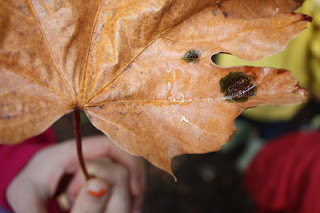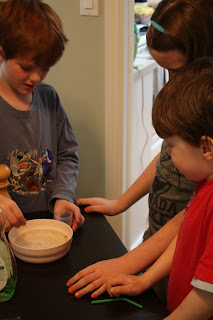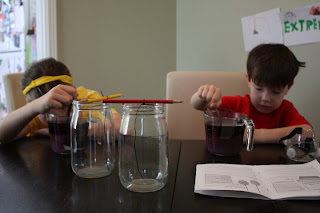This is the part of the salmon life cycle that we learned on this trip.

This is the food chain. The naturalist kept asking us: "Do the salmon need the bears? Do the bugs need the trees?" and so forth.

This is the male having it's milt taken out.

This is the female having it's eggs taken out.

There are over 2500 eggs in the female.

The black dot's on this leaf are insect eggs.

Katie was showing us the life cycle of a salmon.

These are preserved eggs, eggs with an eye, alevin, and fry.

These are a bear's claw marks on a piece of wood.

This is a tree that a beaver tried to chew down. The beaver left the tree because it is a hemlock and the wood is too hard for its teeth.
The naturalist said that she has never seen a beaver there and they don't know where the beaver's lodge is.

This is called a nurse stump. It grows new trees and plants on it's stump.

This is a gigantic ant hill.

Behind the bridge is a beaver dam.

This is the the river where the salmon spawn. The bubbles are air being pumped in to the water for the fish.

This is called a fish ladder.
Why they built it was because the salmon were having a hard time going up a waterfall.

This is a barrier to the salmon swimming upstream.

This whole tree is covered in moss.

This is the salmon ready for the dissection.

This is the swim bladder.
It helps the salmon to float.

These are the salmon's kidneys.
They're not shaped like human kidneys.

These are the eyeballs.
The plate is looking at you.

This is the gill cover. It is how the fish gets air from the water.

This is the fish's brain and spinal cord. When she pulled the spinal cord out, the whole body moved a lot.

This is the salmon's liver. It filters out poison.

This is the salmon's spleen. Its job is to fight diseases.

This is the salmon's stomach.

This is the milt sacs. They are only in males. Milt is white.

This is the heart. It kept beating even after being taken out.

This showed how few salmon survive til they spawn.



















































